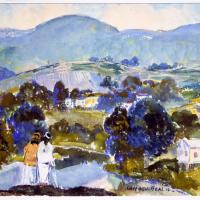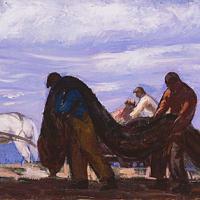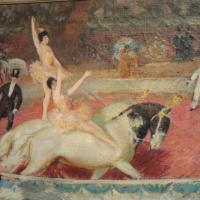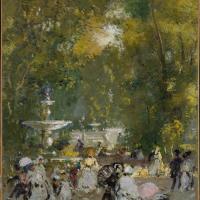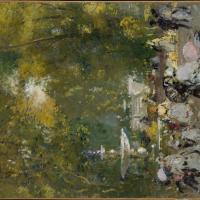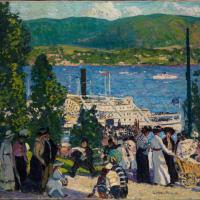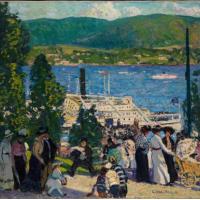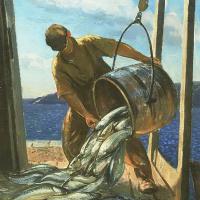Gifford Beal (1879 – 1956)
Gifford Beal (January 24, 1879 – February 5, 1956) was an American artist noted for his work as a painter, watercolorist, printmaker and muralist.
Born in New York City, Gifford Beal was the youngest son in a family of six surviving children.
Beal knew from an early age that he wanted to paint. Between 1892 and 1901 he studied with William Merritt Chase (1849–1916) on weekends in New York City and during the summer at Chase’s Shinnecock Hills Summer School of Art on Long Island.
After graduating from Princeton University in 1900 he studied at the Art Students League of New York from 1901 to 1903 with George Brandt Bridgman (1864–1943) and Frank Vincent DuMond (1865–1951).
In 1903 Beal won his first award (3rd prize) in a competitive exhibition, held at Worcester Art Museum, Massachusetts. Many prizes followed then.
Beal was elected President of the Art Students League of New York in 1916, again in 1918, and from 1920 he held this office continuously until 1930, becoming the longest serving President in its history. He taught at The Art Students’ League in 1931 and 1932.
In 1920 Beal held his first one-man exhibition at Kraushaar Galleries in New York City. It was the beginning of a lifelong relationship he would have with the gallery. His work was exhibited continuously in the country.
Beal’s involvement with organizations for the advancement of the arts began in 1908 when he was elected to Associate by the National Academy of Design; in 1914 he was elected to National Academician. In 1923 he became a member of the National Institute of Arts and Letters, and in 1943 he became a member of the American Academy of Arts and Letters. He was a National Academician of the American Watercolor Society from 1910 until 1955. He was also a member of the Century Association, a New York City club founded in 1847 for artists and writers.
Beal also taught, and among his pupils was the painter Ann Brockman.
The Smithsonian Institution in Washington D.C. holds an archive concerning Beal’s career as an artist containing correspondence, writings, works of art and printed material, much of it provided by Kraushaar Galleries, New York City. This collection has been fully digitized and is available online.
Beal’s subjects varied. He found inspiration not only in holiday spectacle and pageantry but also in the natural and everyday side of life. Some of his best known pictures are of holiday crowds, circus performers and hunting scenes. Yet, Beal enjoyed painting the Caribbean Islands and the landscape along the Hudson River and in Gloucester and Rockport, Massachusetts, where he spent many summers. He depicted many scenes of the fishermen who worked there.
Beal's style underwent a simplification in the 1930s, his "austere" phase which coincided with American regionalism. As he grew older, his work became increasingly free and spirited, in part due to his exploration of different media, especially egg/oil tempera and brush and ink. These changes increased his sense of color and gesture, and he began to emphasize the abstract qualities of his subject. He did some of his boldest and brightest work during the last years of his life.


